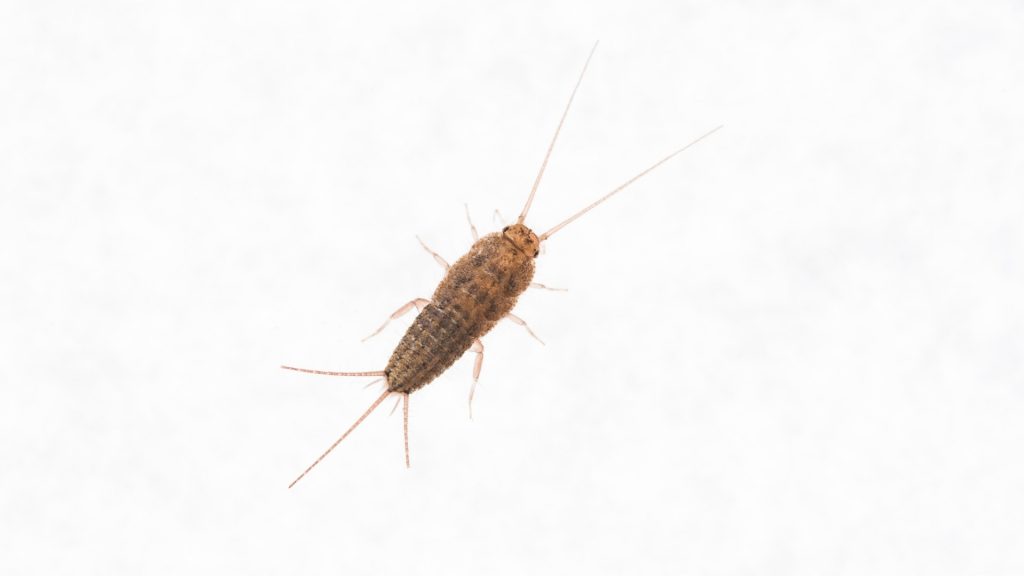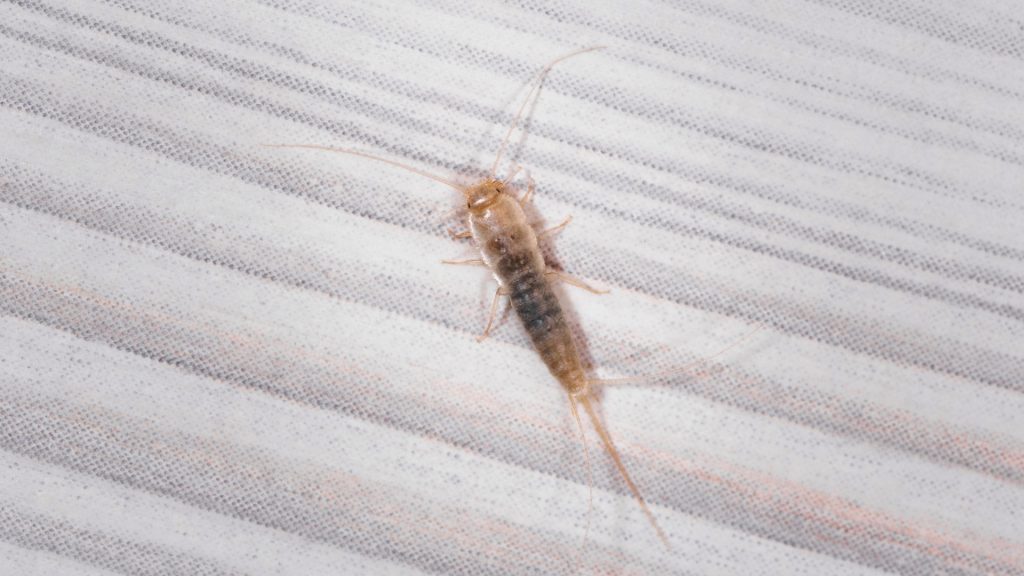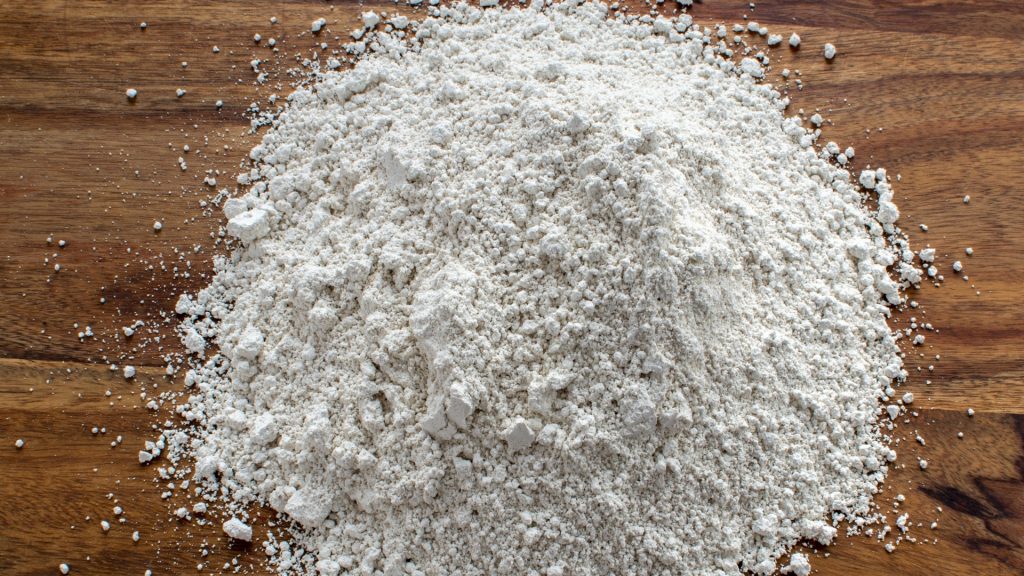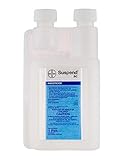A firebrat infestation can be irritating and potentially damaging to your home or business. Keeping a current outbreak of firebrats under control can help prevent any destruction these pests can cause. The moment you notice firebrats in your space, it’s vital you begin to explore ways to get rid of these destructive pests.
How to get rid of firebrats? Firebrats are a nuisance and cause destruction within your home or business. Some of the best ways to get rid of them include using sticky traps, boric acid, and pesticides. There are also natural remedies that can be used in getting rid of these pesky pests including table salt, cedar oil or shavings, cinnamon, etc.

If you’re dealing with firebrats in your apartment and want to know the best techniques of firebrat extermination, read on! When you’re done with this article, you’ll know everything you need to get rid of firebrats for good.
What Is a Firebrat Insect?

A firebrat insect, also known as Thermobia domestica, is a thermophile insect commonly found in very hot and humid areas. Firebrats fall under the insect category of bristletails, along with silverfish insects.
This pest is known for feasting on dried carbohydrates and proteins, such as flour, uncooked rice, potatoes, or cotton. They commonly infest areas such as bakeries, kitchens, and boiler rooms. Firebrats can contaminate food, stain clothing, and destroy paper materials.
What Does a Firebrat Look Like?
Firebrats are around a half-inch in length (1.27 cm) with an unsegmented carrot-shaped body. These insects are typically mottled grey, silver, or brown. Some firebrats come in shades of white or black but are recognizable by dark patches on their backside, three long tails, and long antennae.
Firebrats are nocturnal insects and tend to roam the night in search of food and water. Because of their nocturnal lifestyle, it’s easy to miss a firebrat infestation since they do not come out in the daytime. Firebrats are wingless pests and are unable to fly. Even though they cannot fly, they are fast on their feet, and if exposed to light, they are quick to escape. Firebrats are also capable of jumping sideways.
Firebrat Life Cycle
The lifespan of a firebrat ranges from 12 to 24 months. Typically, a firebrat life cycle spans 11 to 12 weeks. These pests can regrow lost appendages due to their ability to molt 40 to 60 times within their lifespan. Fully matured female firebrats can produce 50 eggs within their lifetime.
Depending on the temperature, it can take firebrats 40-300 days to mature into adulthood and begin reproducing. Colder temperatures lead to longer development times in firebrat larvae. Firebrats can only reproduce in environments with temperatures higher than 90°F (32°C). Any temperature above 112°F (44°C) or below freezing is lethal to firebrat larvae.
Where Do Firebrats Live?
Firebrats live in hot and humid environments that provide them with a food source. They are found almost exclusively within areas inhabited by humans. Common areas where firebrat infestations occur are bakeries, kitchens, boiler rooms, and within walls with hot water pipes.
Can Firebrats Climb?
Firebrats are typically poor climbers. Even with their six legs, they are not as quick on their feet when climbing vertically. Their legs do not provide them the traction they need to climb like other insects.
Smooth surfaces are nearly impossible for them to climb, making it easy to catch them in jars. Firebrats even struggle to climb up the sloped sides of a ceramic sink.
What Do Firebrats Eat?
Firebrats eat all sorts of dried carbohydrates, cellulose, and proteins like flour, uncooked rice, paper products, book bindings, cotton, potatoes, and other similar goods. Firebrats are also known to eat dead insects. These pests have a keen sense of smell when it comes to seeking out sustenance.
These pests have very weak bites and gradually scrape away at any material they are trying to consume. Though the damage they can do happens slowly, firebrats can cause significant and visible damage if left unaddressed.
Difference Between Firebrat and Silverfish
Firebrats and silverfish are commonly mixed up but tend to thrive in completely different environments. Firebrats need a sweltering climate to live, while silverfish prefer to exist in much cooler temperatures.
Their appearance is also slightly different. Firebrats are typically more condensed in size than silverfish. As for color, firebrats are darker in color, with a more brown or grey hue. Silverfish are more likely to be full grey or silver, hence the name silverfish.
Are Firebrats Dangerous?
Firebrats are not dangerous. However, a firebrat infestation should be addressed immediately to prevent damage. Although they cannot cause any physical damage to humans or animals, a firebrat infestation can be troublesome.
Do Firebrats Bite?
While firebrats can physically bite, their bite is so weak that it would go unnoticed. Their weak jaws only allow them to scrape objects rather than having an impactful bite lightly. Firebrat bites are not something to worry about.
A bite from a firebrat will not break the skin and provides no risk of transmitting disease. Even if they could break the skin, firebrats are not poisonous and have no stingers.
Are Firebrats Poisonous?
Firebrats do not have stingers, fangs, or venom glands and are not poisonous. Firebrats also are not known to carry any diseases harmful to humans or other animals. While they may eat your books and spoil your food, firebrats are incapable of harming you.
Risks of Firebrat Infestations
While these pests are harmless to humans, they can cause significant damage to food, books, and fabrics. Understanding the potential risks of a firebrat outbreak can help you recognize what needs protection in your space.
Here are some potential risks of a firebrat infestation:
- Contaminated food: Firebrats can contaminate dried foods with fecal matter and scales that fall off their exoskeleton.
- Destruction of personal property: If neglected, a firebrat infestation can lead to the gradual destruction of your personal property. Firebrats can destroy cloth, paper, cotton, and book bindings.
- Sanitation risks: Any pest infestation you deal with will compromise the sanitary conditions of your space. These insects can track fecal matter and other unwanted bacteria into cracks and crevices.
What Causes Firebrats?
The presence of firebrats is usually caused by the accidental establishment of ideal living conditions for these insects. Messy kitchen spaces or hot and humid areas left unchecked are vulnerable to firebrat infestations. An environment with too much moisture is very inviting to firebrat invaders.
Leaving these at-risk areas unchecked can allow the accumulation of a firebrat population.
How to Prevent Firebrat Infestations?
- Secure Dry Foods
- Upkeep Sanitation
- Clean Susceptible Areas Regularly
- Use an Air Purifier to Eliminate Food Odors.
How to Get Rid of Firebrats in Your Home?

A firebrat infestation can be an absolute nightmare. Lucky for you, there are several proven methods to get rid of firebrats in your home.
Use these tried-and-true methods to get a firebrat infestation under control:
- Sticky traps: Sticky traps are an excellent way to trap and eliminate current pests in your home. However, it’s essential to keep in mind that this does not guarantee the eggs will be destroyed, so it’s not an excellent method to use with more developed infestations.
- Boric acid: The use of boric acid is ideal for larger infestations. Boric acid is relatively non-toxic to humans, but inhaling the product should be avoided. Using boric acid can help eliminate infestations quickly. The firebrats will consume the boric acid, which leads to their fatal dehydration.
- Pesticides: In some emergency cases, pesticides can be helpful, but it’s essential to keep in mind that warm temperatures can diminish the effectiveness of pesticides. The use of pesticides can also be toxic to humans and food supplies, so using these near kitchen outbreaks is not advised.
How to Get Rid of Firebrats Naturally?

If you want to avoid toxic chemicals in the area, you are trying to clear firebrats. There are several remedies you can use to get rid of firebrats naturally.
Here is a list of natural remedies to control firebrat infestations:
- Table salt: Sprinkling table salt around infested areas can help kill the firebrats. They will consume the salt, which eventually leads to their fatal dehydration.
- Cedar oil or shavings: Strong scents have proven to be effective for getting rid of firebrats. Spreading cedar oil or cedar wood shavings around affected areas will deter the presence of firebrats.
- Cinnamon: Similar to cedar oil, firebrats cannot tolerate the smell of cinnamon. Sprinkling cinnamon around a vulnerable area can help keep firebrats away.
- Cloves: Cloves work in a similar way to cinnamon and cedar. The strong scent of cloves is enough to prevent a firebrat infestation.
- Citrus fruit peels: Placing the peels of citrus fruits, such as lemons or oranges, around an at-risk area is an effective method to eliminate the presence of firebrats.
- Cucumber peels: The scent of cucumber peels is also intolerable to firebrats. Spreading cucumber peels around a vulnerable area can help protect it from firebrats.
- Flour and water for a natural sticky trap: If you want a more natural version of a sticky trap, you can make one yourself using flour and water. Mix the flour and water into a paste, then spread it onto a piece of cardboard to dry. Once it’s dry, you’ll have a chemical-free sticky trap to capture pests.
What Repels Firebrats? Products Review

There are a variety of store-bought products you can use to repel firebrats. These products can be used to prevent future infestations or control current outbreaks.
Harris Diatomaceous Earth
- 100% Chemical-Free: Made from 10lbs of food-grade freshwater...
- OMRI Listed for Organic Use: Listed with the Organic Materials...
- Powder Duster Included for Easy Application: Comes with a powder...
- Sourced and Packaged in the USA: Responsibly mined in Nevada and...
- Multi-Purpose Use Indoors and Outdoors
Diatomaceous earth is non-toxic to humans and pets but is an effective method of exterminating firebrats. Pests will consume the diatomaceous earth, which will lead them to fatal dehydration.
Related: Diatomaceous Earth Uses as a Natural Pesticide
Dekko Silverfish Packs
Although advertised towards silverfish infestations, Dekko Packs are adequate for the removal of firebrats, as well. The active ingredient is boric acid, making it an effective form of extermination.
Bayer Suspend SC Insecticide
- Broad-spectrum control of more than 50 nuisance pests
- Effective knockdown with a long residual
- No odor, no visible residue
- Package Dimensions: 3.1 L x 27.7 H x 18.0 W (centimeters)
This insecticide has deltamethrin as the active ingredient, making it practical to eliminate large infestations. This potent insecticide can be toxic and should not be used near kitchens, pets, or heavily trafficked areas.
Summary
Firebrats are a pest that can be destructive and a nuisance to households and businesses. Identifying their presence as early as possible can help to prevent disastrous infestations.
There are various ways to exterminate firebrats and eliminate infestations, each with its advantages and disadvantages. It’s vital to assess your current situation before addressing the outbreak.
List of Sources
Sloderbeck, P. E. (2004). Silverfish and Firebrats. Kansas State University.
Silverfish and Firebrats. (2007). University of Missouri-Columbia.
Rust, M. K., Millard, M. R. (2009). Silverfish and Firebrats. UC IPM.
- How to Get Rid of Copperheads | Practical Guide - August 27, 2023
- How to Get Rid of Corn Snakes | What Makes Them Aggressive? - August 27, 2023
- How to Get Rid of Alligators | Safety Measures and Removal Methods - July 16, 2023



